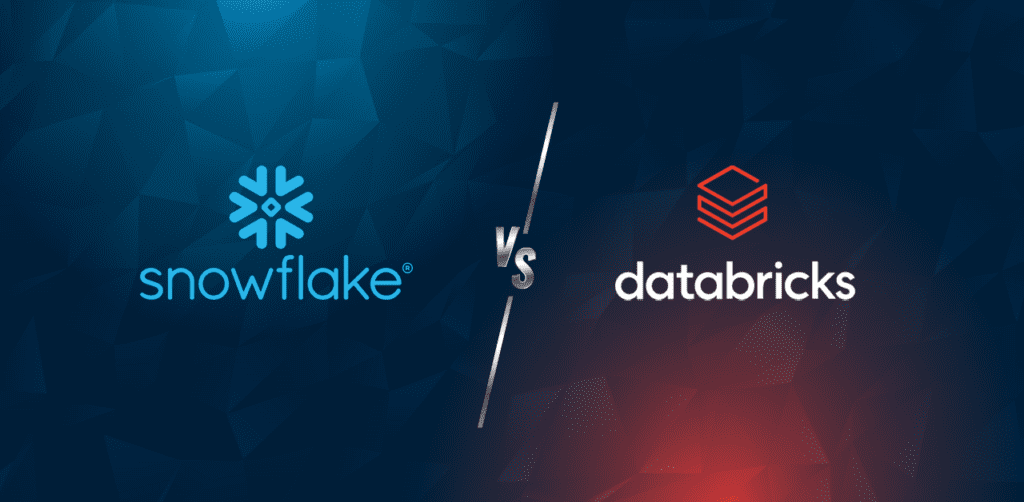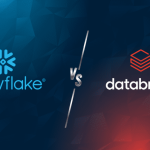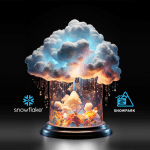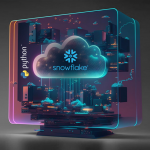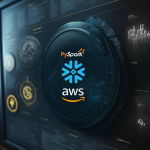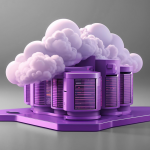As the world plunges deeper into the digital era, the sheer amount of data being generated is mind-boggling. 51 petabytes of information are being produced by internet users every single day, a staggering amount that is equivalent to the weight of the information contained in 51 million blue whales!
It’s no secret that this data is the backbone of innovation and progress for businesses of all sizes, enabling organizations to make informed decisions, personalize products, and streamline operations.
But with so much data at our fingertips, the real challenge lies in effectively storing, processing, and analyzing it. That’s why we’ve decided to delve into the world of cloud data platforms, specifically focusing on two of the most powerful and popular options – Databricks and Snowflake. With their cloud-based solutions, these platforms have changed the game for businesses looking to optimize their data storage and analysis.
What is Databricks?
Imagine a superhero for your data needs, that’s what Databricks is. With an all-star team of data science and engineering experts, they offer a one-stop shop for ETL, batch processing, stream processing, and machine learning. Plus, their collaboration tools and support for multiple cloud providers make it a dream come true for data enthusiasts.

What is Snowflake?
Snowflake is like a fortress for your data, providing a secure and high-performance data warehousing-as-a-service model. With impressive ELT capabilities and support for semi-structured data, Snowflake is a powerhouse for businesses that need reliable data analysis. And with top-notch security features and availability on major cloud providers, Snowflake lets you store and analyze your data with complete peace of mind.

Together, these cloud data platforms have revolutionized the way businesses approach data management, providing scalable, secure, and flexible solutions for storing, querying, and processing vast amounts of information. Let’s take a look at how these platforms differ in the following use cases.
How Snowflake’s Data Cloud Secures & Empowers a Customer Data Platform
A Customer Data Platform provider turned to Snowflake to support their different workloads and keep costs under control. The platform’s decoupling of computing and storage, along with the ability to store data closer to customers, improved performance and compliance with regulations like GDPR and PDPA.
Through Snowflake, the company had access to technical support and go-to-market assistance, which helped them accelerate customer onboarding and expand into new geographies. Snowflake’s platform allowed the company to handle its different workloads while providing the best service possible to its customers, resulting in a win-win for everyone involved.
How Databricks Personalized Experiences with Data and ML
A ride-hailing platform had disparate data teams supporting different product functions, leading to an inconsistent understanding of consumers. To solve this, they adopted Databricks’ Lakehouse Platform, which helped build a self-service consumer data solution, providing a centralized and consistent view of consumers.
Databricks’ Delta Lake optimized user-generated signals and data sources, enhancing data integrity and security, while Databricks’ unified approach to data and faster cross-functional collaboration led to better marketing campaign ROI and improved features, resulting in a more personalized in-app experience for consumers. The platform also helped reduce engineering overhead and cost increases.
Stress Testing Databricks and Snowflake’s Data Warehousing Systems
As the demand for data analytics grows, so does the need for speedy and efficient data warehousing systems. However, how can one measure the performance of these systems? Enter the world of benchmarks.
The Transaction Processing Performance Council (TPC) created the TPC-DS, a decision-support data warehousing benchmark that has become the industry standard for measuring database systems’ performance. The benchmark includes workloads such as loading data sets, processing complex queries, and running data maintenance functions. It even has a primary metric, QphDS, to determine the performance of these workloads.
But does TPC-DS accurately reflect real-world scenarios? To find out, the research team at Barcelona Supercomputing Center (BSC) developed a TPC-DS-derived benchmark comparing two major data warehousing systems: Databricks SQL and Snowflake. The results were shocking – Databricks SQL outperformed Snowflake by 2.7x.
The Great Data Race has just begun, with vendors continuously tweaking the TPC-DS benchmark to optimize their systems’ performance. However, benchmarks like the TPC-DS and research from BSC serve as a guiding light to objectively measure data warehouse performance, ensuring businesses can make informed decisions about which system will best suit their needs.
While the score can be an indicator of performance, real-world performance challenges are more personalized to the needs of the company’s tech stack and industry requirements. Snowflake and Databricks are both powerful platforms to work with.
Conclusion
In conclusion, the staggering amount of data being produced every day highlights the need for effective data management, storage, processing, and analysis. Cloud data platforms like Databricks and Snowflake have revolutionized the way businesses approach data management by providing scalable, secure, and flexible solutions.
The use cases presented in this blog demonstrate how these platforms have empowered businesses to improve performance, compliance, and customer onboarding, and expand into new geographies.
Additionally, the stress testing of Databricks and Snowflake’s data warehousing systems through industry-standard benchmarks like TPC-DS allows businesses to make informed decisions about which platform will best suit their needs. As data continues to be the backbone of innovation and progress, cloud data platforms like Databricks and Snowflake will play a crucial role in driving businesses forward.
At Factspan, we understand the power of data-driven insights and decision-making. That’s why our team of data experts leverages the capabilities of databricks and snowflake to provide scalable, secure, and flexible solutions for our client’s unique data management needs.
Contact us today to learn more about how we can help you leverage the power of Databricks and Snowflake to meet your data management needs.
